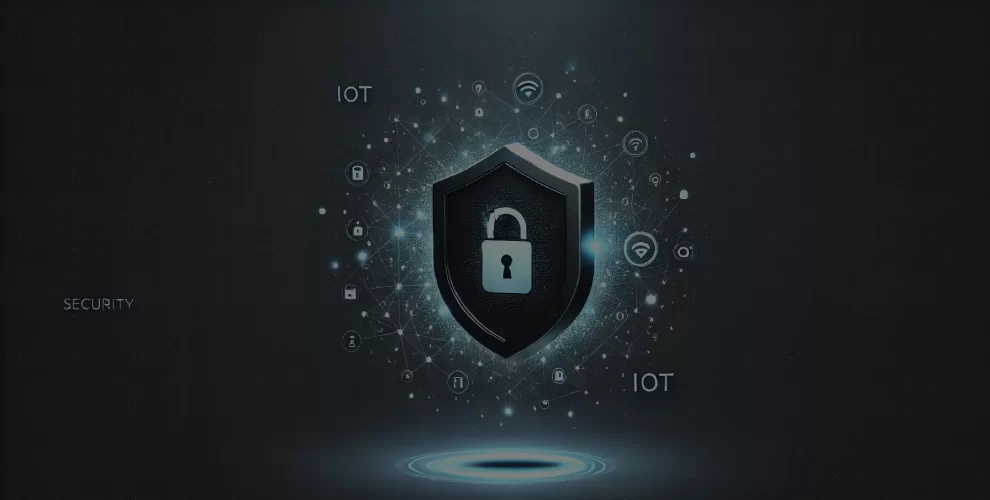
Why IOT Security is Crucial and How to Protect Your Devices
Table of Contents
Introduction
Welcome to WikiGlitz! IoT devices, ranging from smart home gadgets to industrial machinery, provide convenience and efficiency but also introduce vulnerabilities that cybercriminals can exploit.
In this article, we’ll discuss why IoT security is crucial, common vulnerabilities, and practical tips to protect your IoT devices at home and in businesses.
Key Takeaways
- Importance of IoT Security: Understand why securing your IoT devices is essential.
- Common Vulnerabilities: Learn about the most common security risks associated with IoT.
- Practical Protection Tips: Discover actionable steps to safeguard your IoT devices.
Why IoT Security is Crucial
The proliferation of IoT devices has expanded the digital footprint of both individuals and organizations, increasing the potential attack surface for cyber threats.
IoT devices are often not built with security in mind, making them vulnerable entry points for hackers.
Key Reasons for IoT Security:
- Data Protection: Safeguarding personal and sensitive information from breaches.
- System Integrity: Preventing unauthorized control of devices that can disrupt operations.
- Privacy Maintenance: Ensuring that users’ privacy is not compromised.
Common IoT Vulnerabilities
Weak Authentication and Authorization
Many IoT devices rely on weak authentication and authorization practices, such as default passwords, which are easily exploited by hackers.
Weak passwords and lack of multi-factor authentication make it easier for cybercriminals to gain unauthorized access.
Example:
- Default Passwords: Using factory-set passwords that are common knowledge can allow easy unauthorized access.
Lack of Encryption
A significant amount of IoT device traffic is unencrypted, making data transmissions vulnerable to interception and tampering. Without encryption, sensitive information such as personal data and operational commands can be accessed and manipulated by malicious actors.
Example:
- Unencrypted Data: IoT devices transmitting unencrypted data can be intercepted, leading to data breaches and unauthorized control.
Insecure Communication Protocols
IoT devices often use insecure communication protocols, making it easier for hackers to intercept and manipulate data.
Protocols like HTTP and outdated Bluetooth versions are common targets for exploitation.
Example:
- Bluetooth Vulnerabilities: Exploiting weaknesses in Bluetooth protocols to gain unauthorized access to connected devices.
Practical Tips for Securing IoT Devices
Use Strong, Unique Passwords
Avoid default passwords and change them to something more complex. Implement multi-factor authentication wherever possible.
Tips:
- Create Complex Passwords: Use a mix of uppercase, lowercase, numbers, and special characters.
- Change Default Passwords: Immediately replace factory-set passwords with unique ones.
Enable Encryption
This adds a layer of protection against unauthorized access and data breaches. Use up-to-date encryption standards and regularly update them to combat evolving threats.
Tips:
- Use Strong Encryption Protocols: Implement protocols like TLS 1.3 to secure data transmissions.
- Regularly Update Encryption Standards: Keep your encryption methods current to protect against new vulnerabilities.
Regularly Update Firmware and Software
Tips:
- Enable Automatic Updates: If available, enable automatic updates for your IoT devices.
- Regularly Check for Updates: Manually check for updates if automatic updates are not an option.
Implement Network Segmentation
Network segmentation involves dividing a network into smaller segments, each acting as its own subnet. This limits the spread of potential threats and isolates IoT devices from critical systems.
Tips:
- Create Separate Networks: Use different networks for IoT devices and sensitive data.
- Use VLANs: Implement Virtual Local Area Networks to segment traffic within your network.
Monitor Network Traffic
Regularly monitoring network traffic can help detect unusual activity and potential threats. Use network monitoring tools to keep an eye on your IoT devices and their interactions.
Tips:
- Set Up Alerts: Configure alerts for unusual activities or unauthorized access attempts.
- Use Intrusion Detection Systems: Deploy systems that can detect and respond to suspicious behavior.
Secure Communication Protocols
Use protocols that support encryption and secure authentication methods.
Tips:
- Use Secure Protocols: Implement HTTPS, TLS, and other secure communication standards.
- Disable Unnecessary Protocols: Turn off any communication protocols that are not needed to reduce potential entry points.
IoT Security for Businesses
Conduct Regular Risk Assessments
Businesses should regularly assess the risks associated with their IoT devices. Identifying and understanding the vulnerabilities within your IoT ecosystem allows you to address them proactively.
Tips:
- Inventory IoT Devices: Keep a detailed inventory of all IoT devices connected to your network.
- Evaluate Security Measures: Regularly review and update your security protocols.
Partner with IoT Security Experts
Given the complexity of IoT security, partnering with experts can provide significant advantages. IoT security professionals can offer insights, tools, and services to enhance your security posture.
Tips:
- Hire Security Consultants: Engage with consultants to audit and improve your IoT security.
- Use Managed Security Services: Consider outsourcing to managed security service providers for continuous monitoring and protection.
Common IoT Security Solutions
Intrusion Prevention Systems (IPS)
Intrusion Prevention Systems can detect and prevent potential threats to your IoT devices. They monitor network traffic for suspicious activity and can block malicious actions.
Benefits:
- Real-Time Threat Detection: Identify threats as they occur.
- Automated Response: Automatically block or mitigate identified threats.
Zero Trust Security Model
The Zero Trust security model operates on the principle of not trusting any device or user by default, even if they are within the network perimeter. This model requires verification for each access attempt.
Benefits:
- Enhanced Access Control: Ensures that only authorized devices and users can access sensitive data.
- Reduced Risk of Breaches: Minimizes the potential for unauthorized access.
Conclusion
IoT security is crucial to protect sensitive data, maintain system integrity, and ensure privacy. By understanding common vulnerabilities and implementing practical security measures, both individuals and businesses can safeguard their IoT devices effectively.
Stay proactive in your approach to IoT security to mitigate risks and enjoy the benefits of a connected world.
Stay tuned to WikiGlitz for more insights and updates on the latest technology trends. We hope you found this guide informative and helpful in securing your IoT devices.
FAQs
Why is IoT security important?
IoT security is essential to protect sensitive data, prevent unauthorized access, and ensure the integrity and reliability of connected devices.
What are common vulnerabilities in IoT devices?
Common vulnerabilities include weak authentication, lack of encryption, insecure communication protocols, and outdated firmware.
How can I protect my IoT devices?
Protect your IoT devices by using strong, unique passwords, enabling encryption, regularly updating firmware, segmenting networks, and monitoring network traffic.
What is network segmentation, and why is it important?
Network segmentation involves dividing a network into smaller subnets to isolate IoT devices from critical systems, reducing the spread of potential threats.
How can businesses enhance IoT security?
Businesses can enhance IoT security by conducting regular risk assessments, partnering with IoT security experts, and implementing solutions like Intrusion Prevention Systems and Zero Trust security models.
Want to keep up with our blog?
Our most valuable tips right inside your inbox, once per month.
Error: Contact form not found.
WikiGlitz Team
Welcome to WikiGlitz, your ultimate destination for tech insights and innovation. Our expert team is dedicated to delivering free resources and professional advice on various technology topics, including Artificial Intelligence, Cyber Security, Cloud Computing, and more. We strive to empower our readers with up-to-date information and practical guidance, ensuring you stay ahead in the rapidly evolving tech landscape. At WikiGlitz, we are passionate about making complex technology accessible to everyone. Our team of seasoned experts curates content that is both informative and engaging, helping you understand and leverage the latest tech trends. Whether you're a tech enthusiast or a professional, WikiGlitz is your go-to source for reliable, expert-driven content. Join us on this journey to explore and embrace the future of technology.





